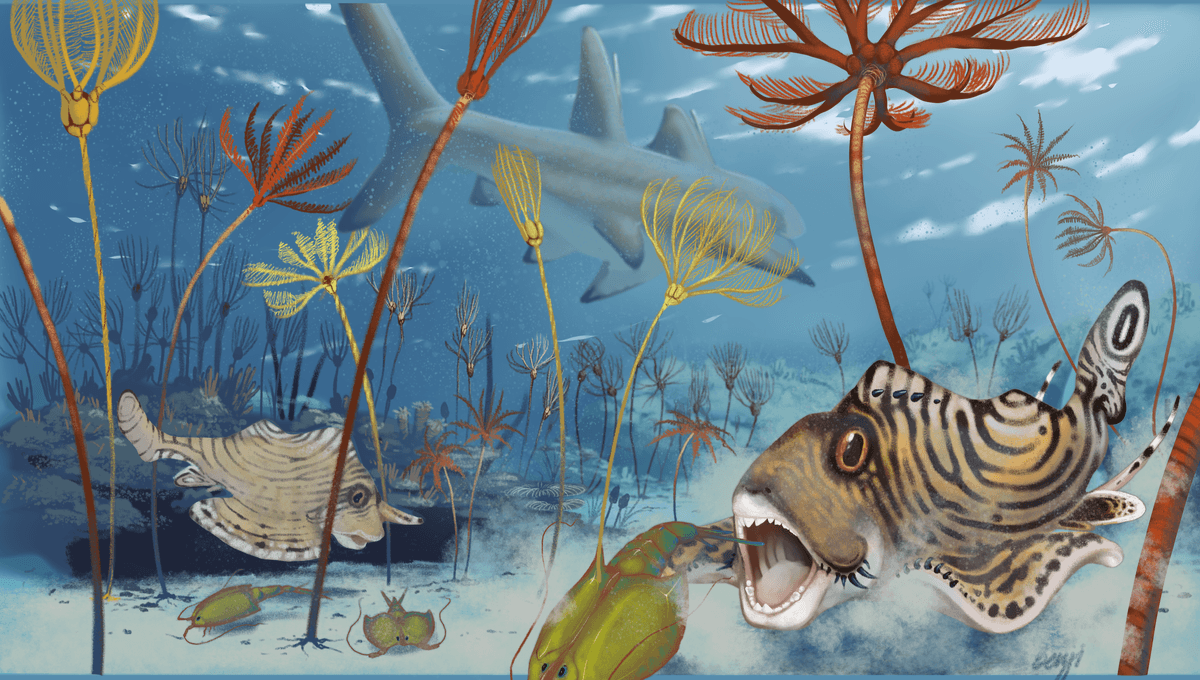
What kind of creatures were kicking about in the oceans 340 million years ago? We’ve now got a slightly clearer picture thanks to the discovery of a small but mighty ancient shark species found fossilized in the depths of the world’s longest cave system, Mammoth Cave.
ADVERTISEMENT
The new species has been named Clavusodens mcginnisi, or the “McGinnis’ nail tooth”, honoring naturalist and retired National Park Service superintendent David McGinnis “for his leadership in paleontological resource stewardship during his 39-year career beginning at Mammoth Cave National Park,” wrote the authors of the study describing the ancient shark.
It was identified from a collection of small fossilized teeth found within the Ste. Genevieve Formation, a layer of limestone and shale in Mammoth Cave that formed on the floor of warm ocean reefs during the geological period known as the Middle Mississippian.
These teeth lent the McGinnis’ nail tooth shark the other part of its common name – with flat crowns and long bases, the shark’s back teeth look a bit like old iron nails. These chompers were used to crush prey such as crustaceans, small brachiopods, and worms.
Its front teeth, however, were more chisel-like. Together with the estimate that the McGinnis’ nail tooth shark was only about 8 to 10 centimeters (3 to 4 inches) long – certainly not big enough to swallow you – this led them to nickname it the “chipmunk shark”.
The McGinnis’ nail tooth shark also belongs to a group of jawed, cartilaginous fish known as the obruchevodid petalodonts. According to the study authors, this group was “among the most specialized cartilaginous fishes during the Mississippian, potentially adapted to live in complex reef and reef-like habitats.”
This isn’t the first time that a new species of ancient shark has been discovered lurking in the limestone of Mammoth Cave. As part of the Paleontological Resources Inventory – an ongoing National Park Service project that aims to survey the parks for fossils, assess their significance, and identify how they can be managed and preserved – a treasure trove of prehistoric fish has been identified within the cave system.
ADVERTISEMENT
“The fossil discoveries in Mammoth Cave continue to reveal a wealth of new information about ancient shark species,” said Superintendent Barclay Trimble in a statement. “Researchers and volunteers collected samples from the main Mammoth Cave system and from smaller isolated caves throughout the park that have provided new data on previously known ancient sharks and revealed several species that are brand new to science.”
Just last year, in fact, paleontologists identified two such species: Troglocladodus trimblei and Glikmanius careforum. These Middle to Late Mississippian sharks were much bigger than the McGinnis’ nail tooth, though G. careforum is also thought to have had an impressive bite.
“These discoveries help scientists to better understand the relationship and evolution of modern shark species within this relatively small geographic region,” said Trimble.
The study is published in the Journal of Paleontology.
Source Link: New 340-Million-Year-Old “Chipmunk Shark” Species Discovered In Mammoth Cave National Park